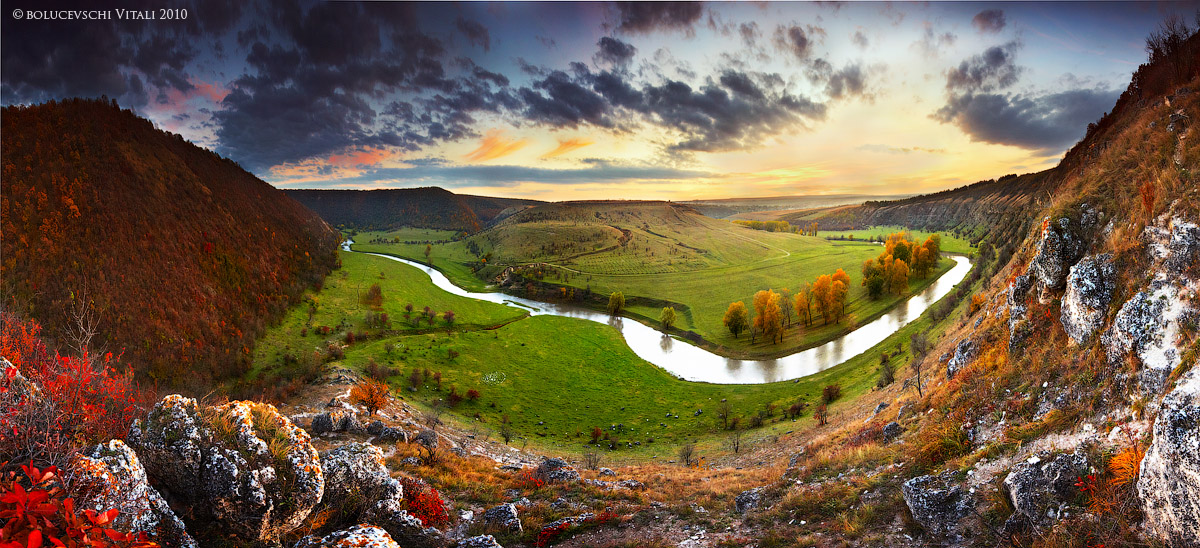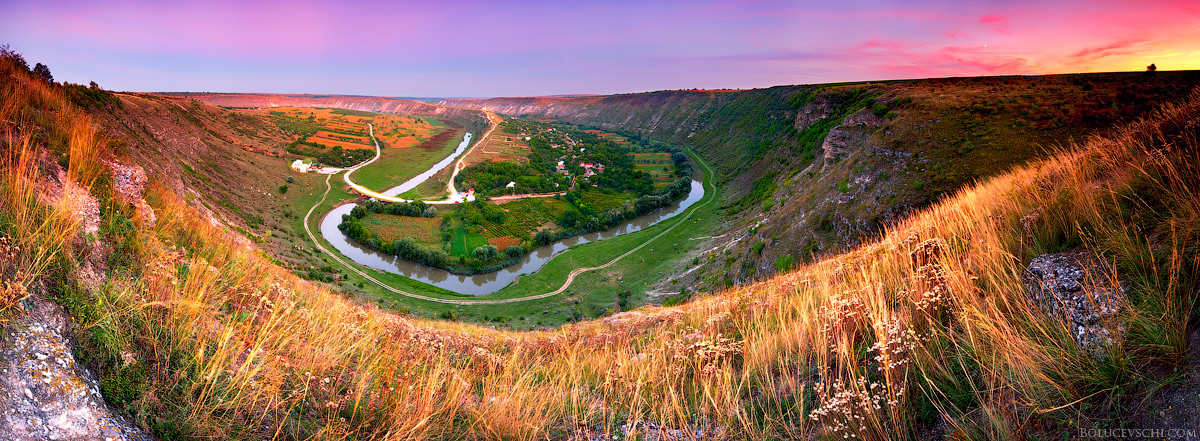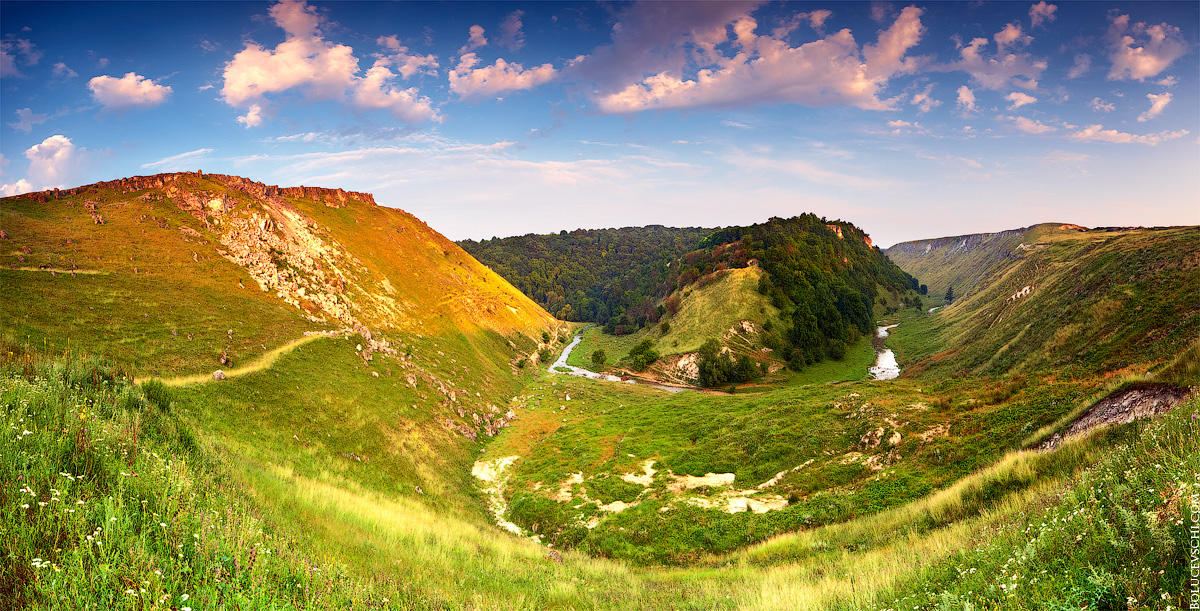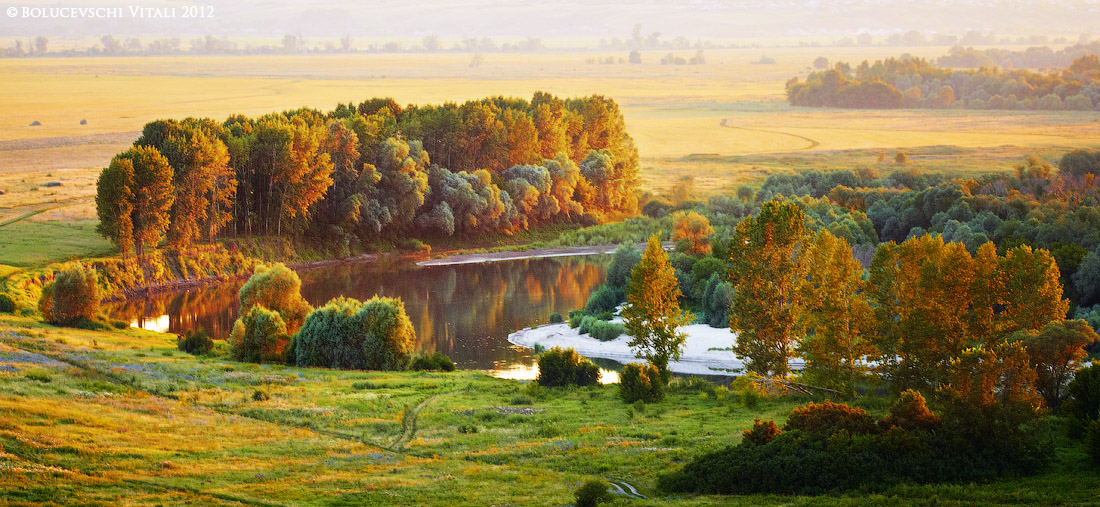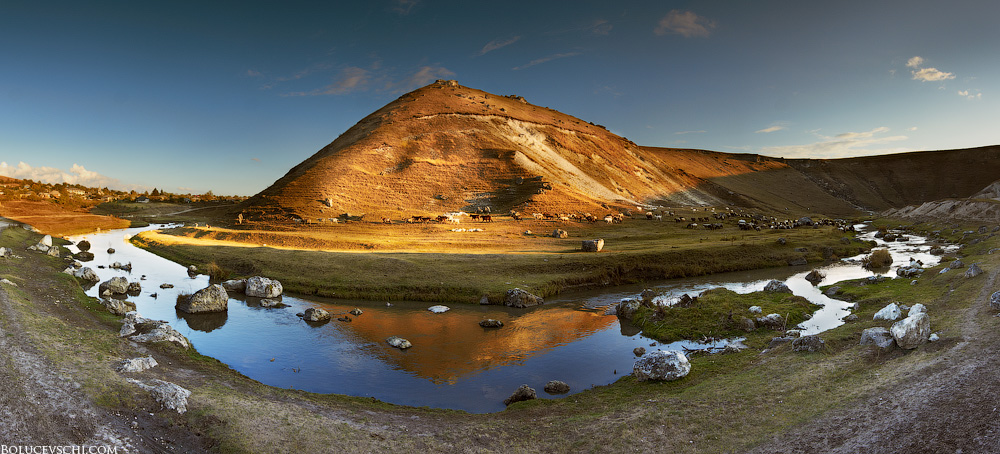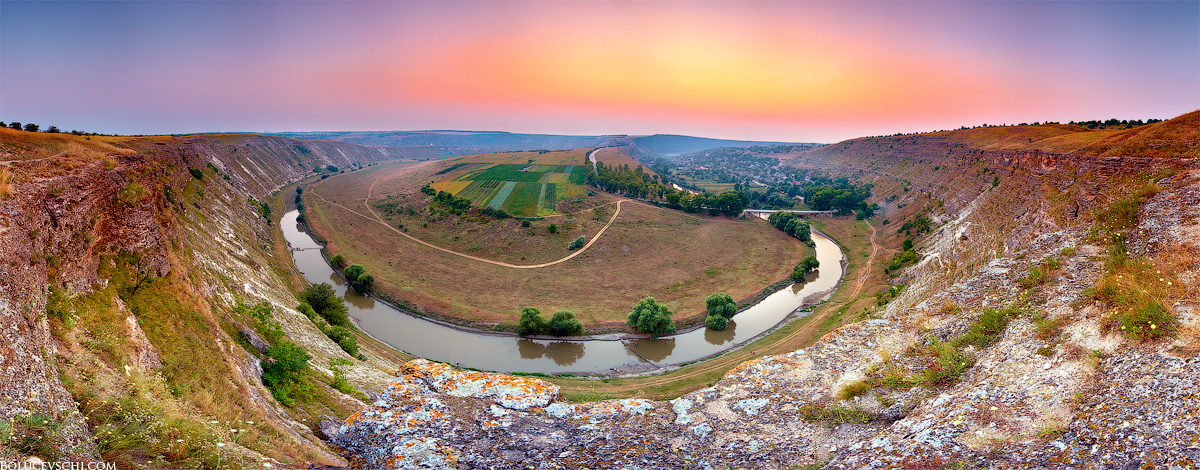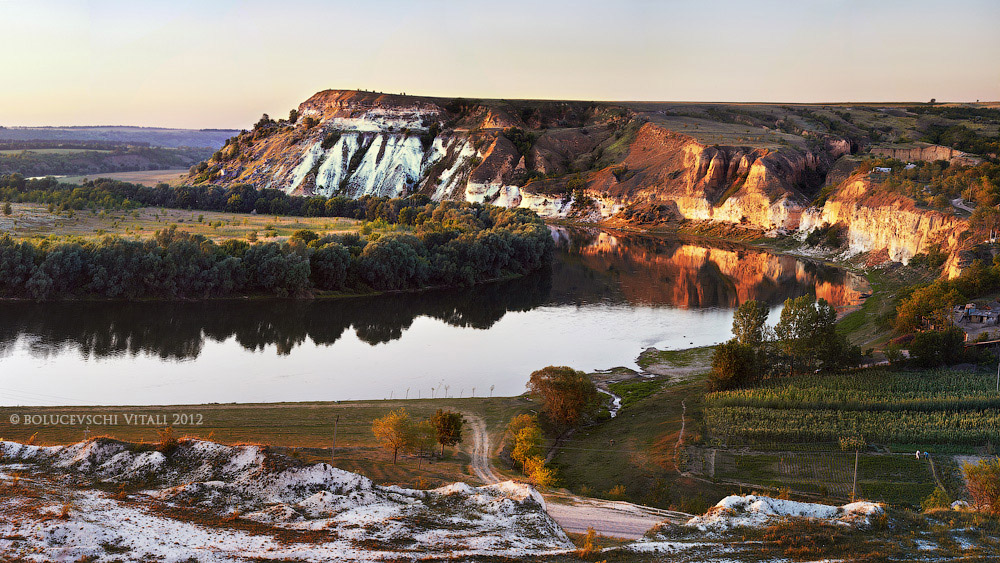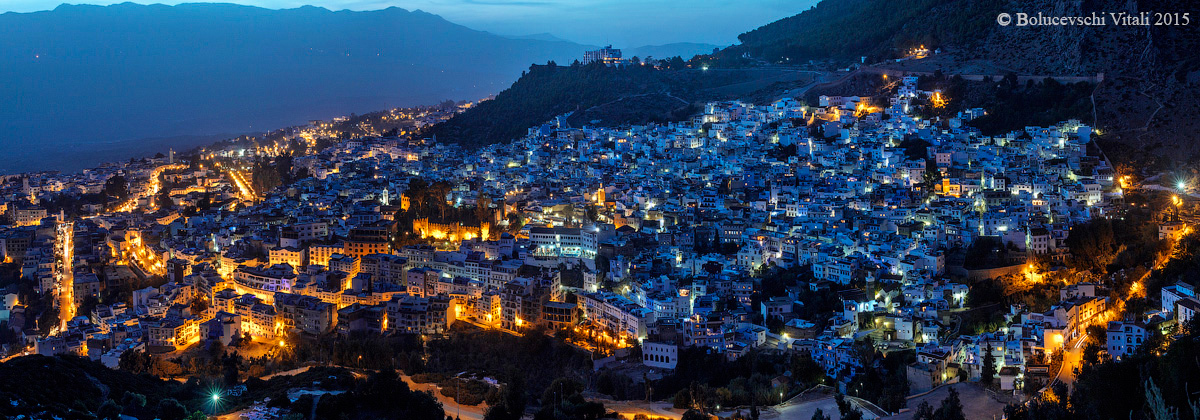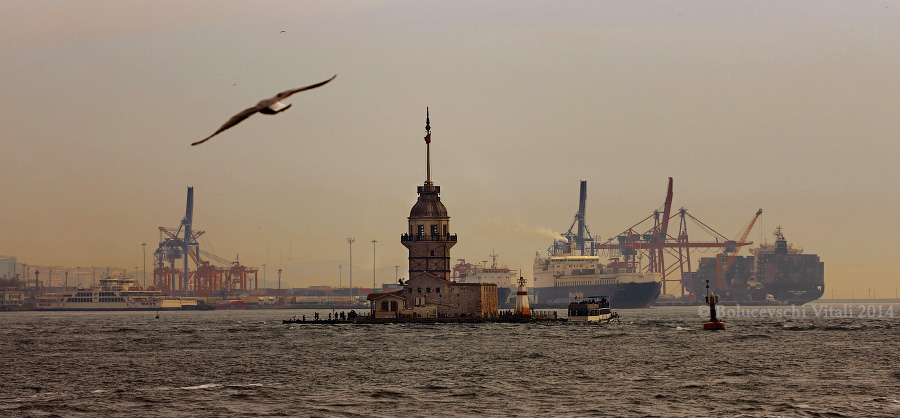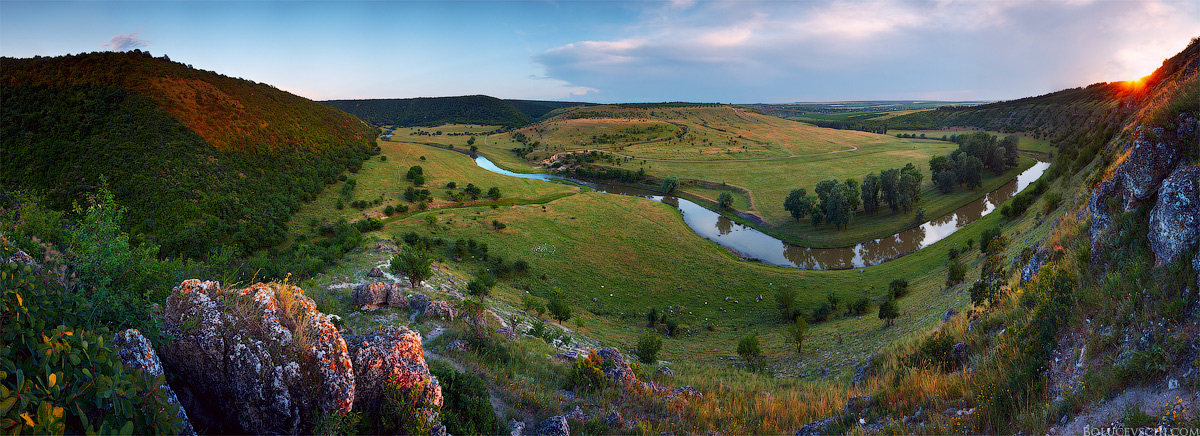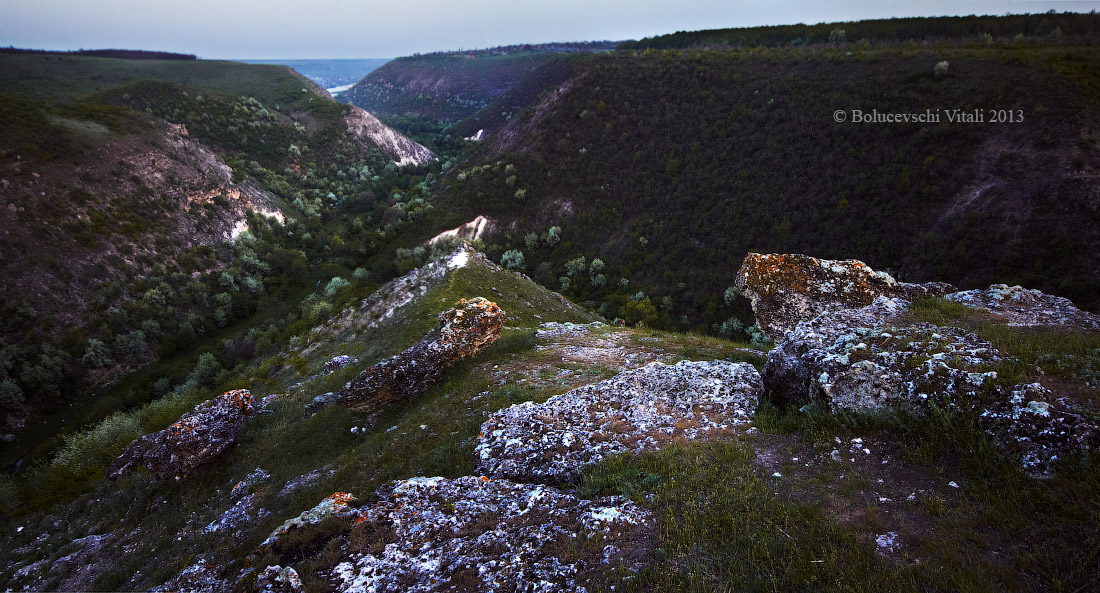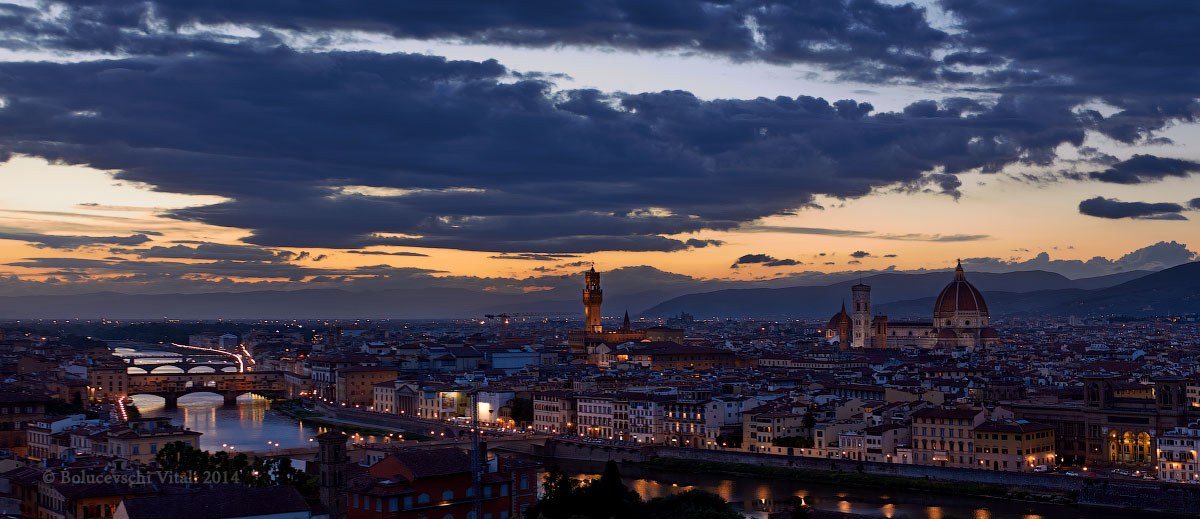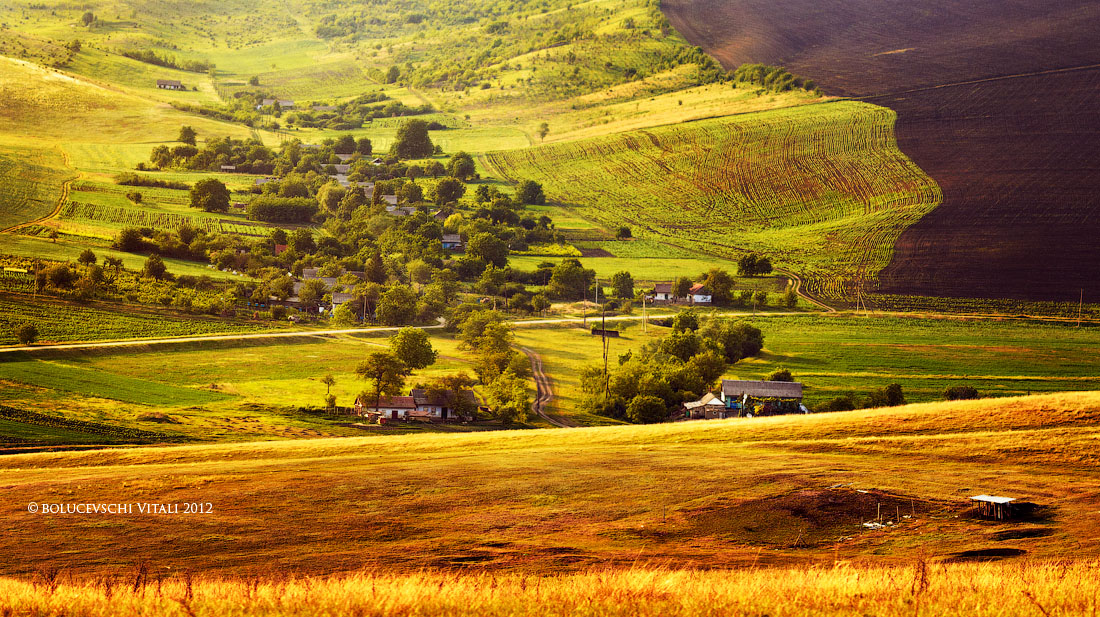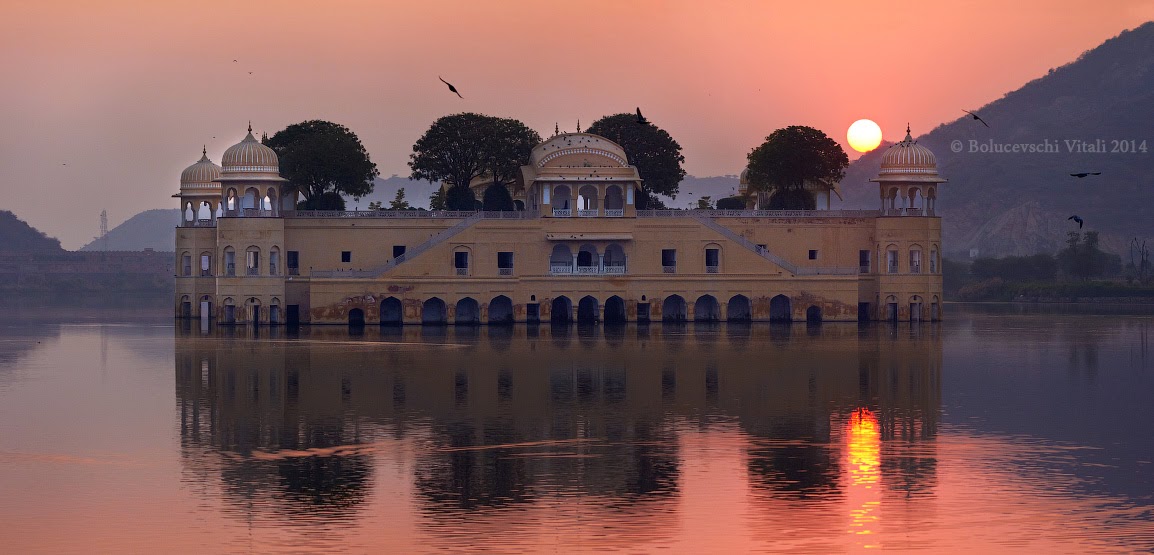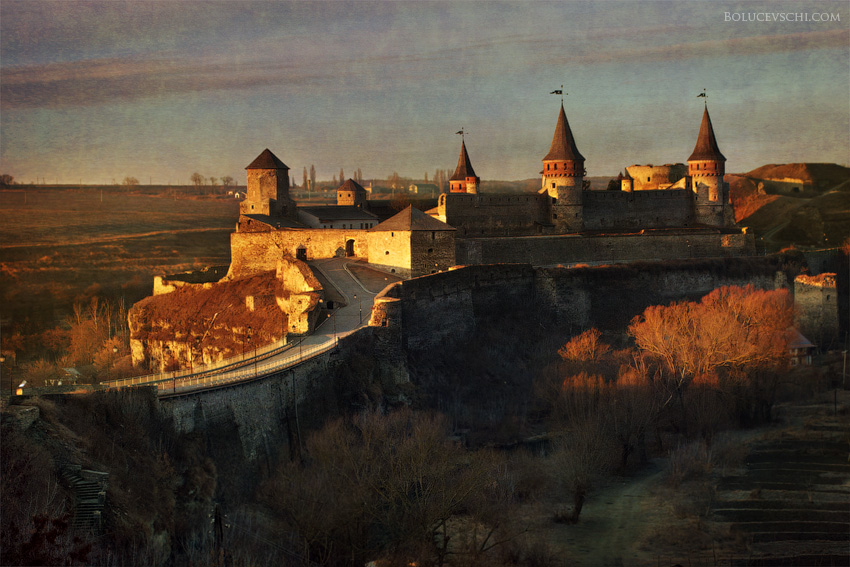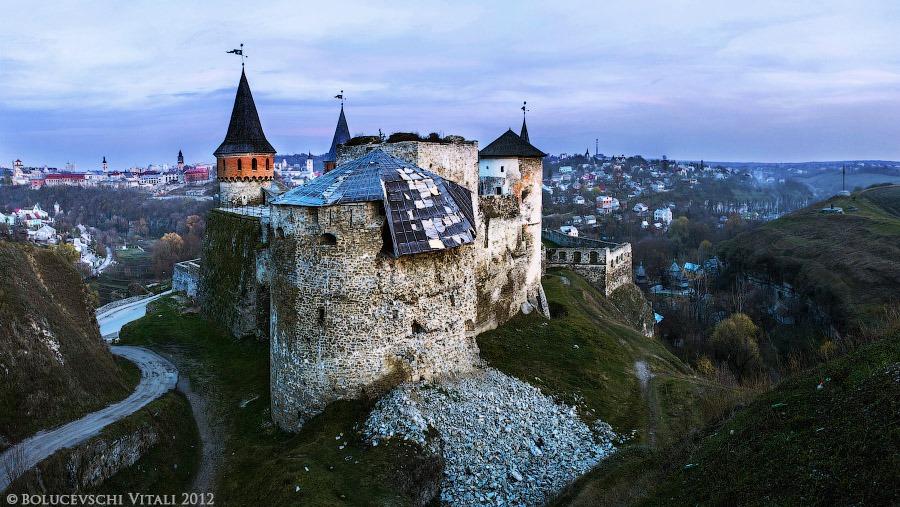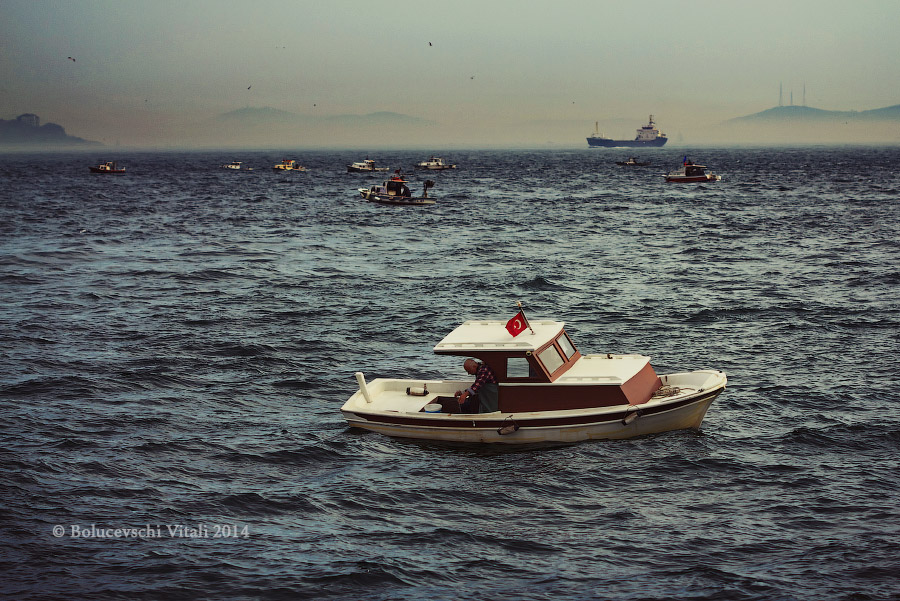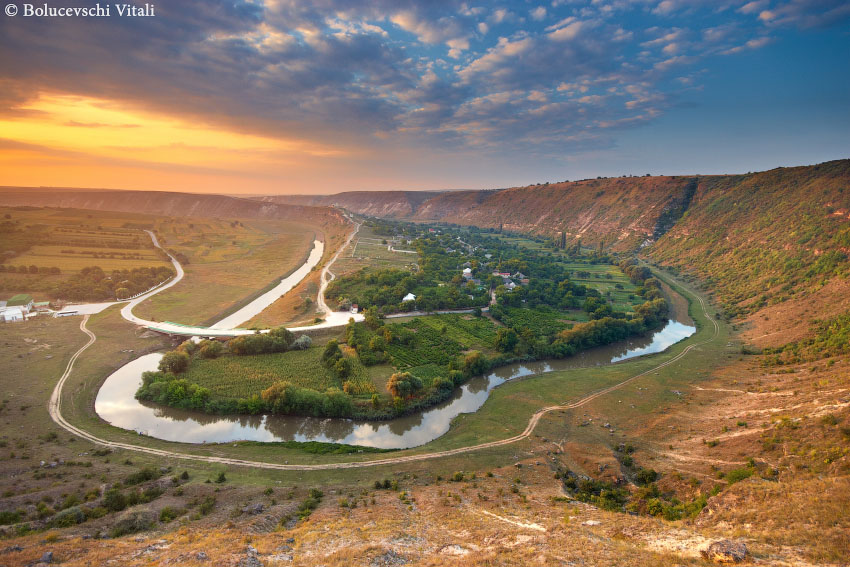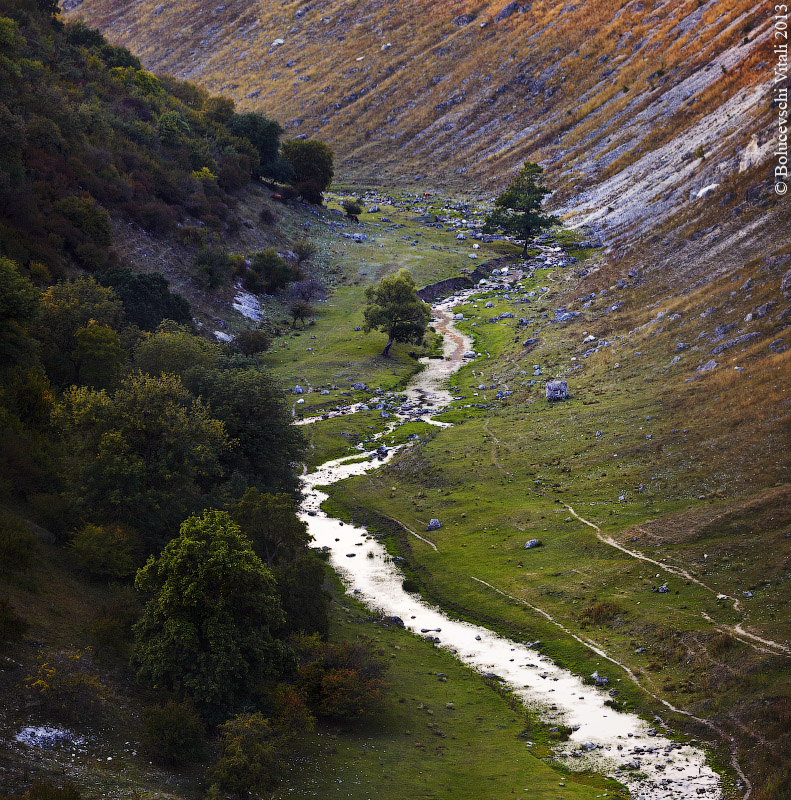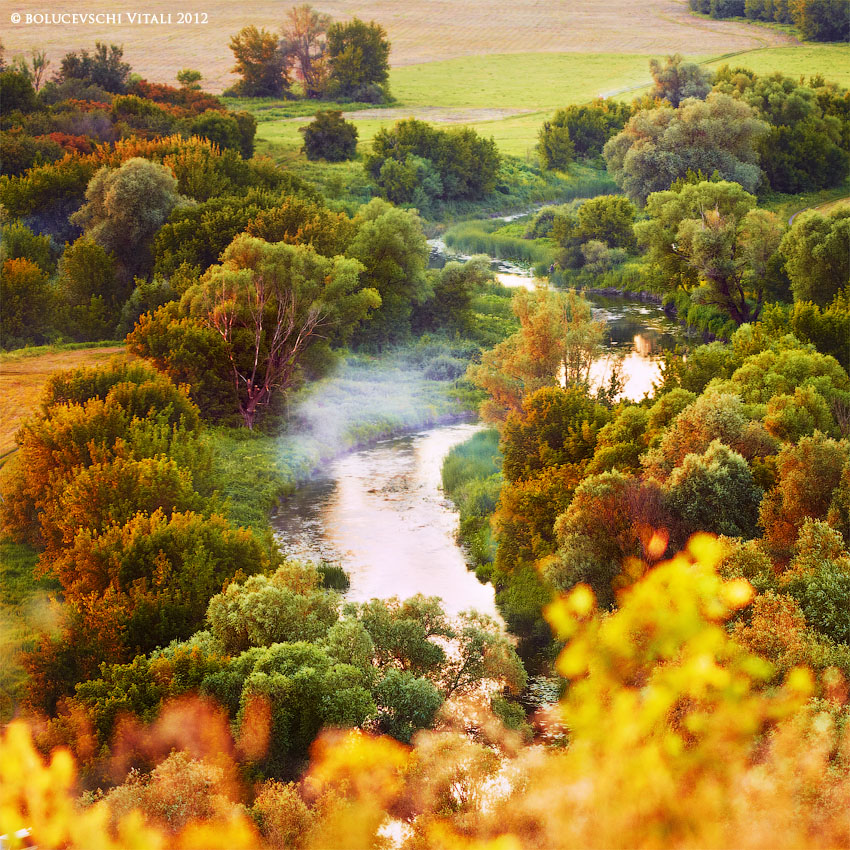Landscapes of Moldova
The Most Beautiful Landscapes of Moldova: Through the Photographer’s Lens
Moldova is a country abundant in diverse natural landscapes, which I, as a photographer, strive to immortalize in their full glory. Through my lens, I unveil unique corners of this remarkable nation to my audience. Each shot is more than just a photograph; it is an attempt to convey the mood and atmosphere of these locales. In this article, I will share my impressions of Moldova’s most breathtaking landscapes that I have had the privilege of capturing.
The Dniester Valley
Between Sky and Water
The Dniester, one of Moldova’s major rivers, carves picturesque valleys with steep banks and verdant hills. A boat ride along the Dniester reveals numerous unique vistas that I endeavor to capture in my works. Every twist of the river presents new perspectives for photography, whether it be the morning mist cloaking the waters or the sunset hues reflecting in the river’s mirrored surface.
Orhei Cliffs
Historical Heritage and Natural Beauty
Old Orhei is an archaeological and historical complex situated 60 km from Chisinau. In my photographs, I aim to convey not only the grandeur of ancient cave monasteries and fortresses but also the natural beauty of the surrounding landscapes. The Orhei cliffs, sculpted by nature and history, provide a distinctive backdrop for my images. Their rugged beauty and enigmatic atmosphere inspire me to create new works.
Codri Forests
The Green Heart of Moldova
Codri represents dense woodlands located in the central part of Moldova. Here, I find ample opportunities for photography, ranging from rare plants and animals to serene forest trails and picturesque meadows. In my work, I strive to capture the harmony and tranquility I feel while wandering through these woods. Codri is a place where nature reveals its strength and beauty in its fullest form.
The Prut River
Natural Border and Sanctuary
The Prut is another significant river in Moldova, forming a natural boundary between Moldova and Romania. Along the river, one can find reserves and natural parks teeming with a variety of bird species and other wildlife. My photographs capture moments when nature bursts forth in vibrant colors, particularly in spring and autumn. Each image reflects the remarkable biological diversity observable along the Prut River.
Moldova is a land that can astonish with its natural beauty and rich cultural heritage. From vineyards and rivers to forests and parks, there is something here for everyone. Through my photographs, I aim to convey the unique atmosphere and beauty I experience while exploring this extraordinary country. May my work inspire you to embark on new discoveries and journeys through the magnificent Moldova.
Landscape Photography: An Art of Capturing Natural Beauty
Landscape photography is an art form that captures the inherent beauty of the natural world. Photographers specializing in this genre create stunning images that convey nature’s grandeur and diversity. In this article, we will explore what makes landscape photography unique, how to select the right equipment, and offer tips for creating stunning shots.
Choosing Equipment for Landscape Photography
Cameras and Lenses
For landscape photography, selecting the right camera and lenses is crucial. DSLR and mirrorless cameras are excellent choices due to their high resolutions and manual settings. When it comes to lenses, wide-angle lenses with focal lengths from 14 to 35 mm are ideal for capturing expansive landscapes.
Tripods and Filters
A tripod is an essential piece of landscape photography equipment. It provides stability for the camera and allows for long exposures without image blur. Filters, such as polarizing and neutral density filters, enhance image quality by reducing glare and adjusting exposure.
Landscape Photography Techniques
Composition
Composition is fundamental in landscape photography. Use the rule of thirds to create balanced and engaging images. Including foreground, middle ground, and background elements adds depth to your photos. Additionally, consider the horizon line and avoid placing it directly in the center of the frame.
Lighting
Lighting is one of the most critical aspects of landscape photography. The golden hour—right after sunrise and before sunset—provides soft, warm light ideal for creating beautiful landscapes. Cloudy days can also be advantageous, as clouds act as a giant diffuser, creating soft, even lighting.
Camera Settings
For landscape photography, it is preferable to use manual mode. Settings such as aperture (f/8-f/16), low ISO (100-400), and long exposures help achieve sharpness and detail. It is also recommended to shoot in RAW format for greater flexibility in post-processing.
Post-Processing Landscape Photographs
Basic Tools
Post-processing enhances and emphasizes the best features of your shots. Adobe Lightroom and Photoshop are popular editing programs that offer a range of tools for adjusting exposure, contrast, saturation, and other parameters.
Color and Contrast Adjustment
In post-processing, adjusting color and contrast is crucial. Tuning these parameters helps highlight the natural beauty of the landscape and makes it more expressive. Utilize the histogram to ensure proper exposure of the image.
Removing Unwanted Objects
Use cloning and healing tools to eliminate unwanted objects from your photos. This might include debris, wires, or other distracting elements that mar the overall appearance of the image.
Tips and Tricks for Landscape Photographers
Planning Your Shoot
The success of landscape photography often depends on careful planning. Use weather and sunlight prediction apps to choose the best time and location for shooting. Also, scout the area in advance to find interesting angles and compositions.
Using Leading Lines
Leading lines direct the viewer’s eye through the image and create a sense of depth. These can be roads, rivers, fences, or other elements that guide the viewer toward the main subject of the photograph.
Experimenting with Long Exposures
Long exposures can create unique effects, such as blurred water or moving clouds. Use ND filters to control exposure and achieve the desired effect even in bright daylight.
Conclusion
Landscape photography requires patience, attention to detail, and creativity. With the right equipment, shooting techniques, and post-processing skills, you can create magnificent images that captivate and inspire. Follow these tips and experiment to discover your unique style in this genre.

